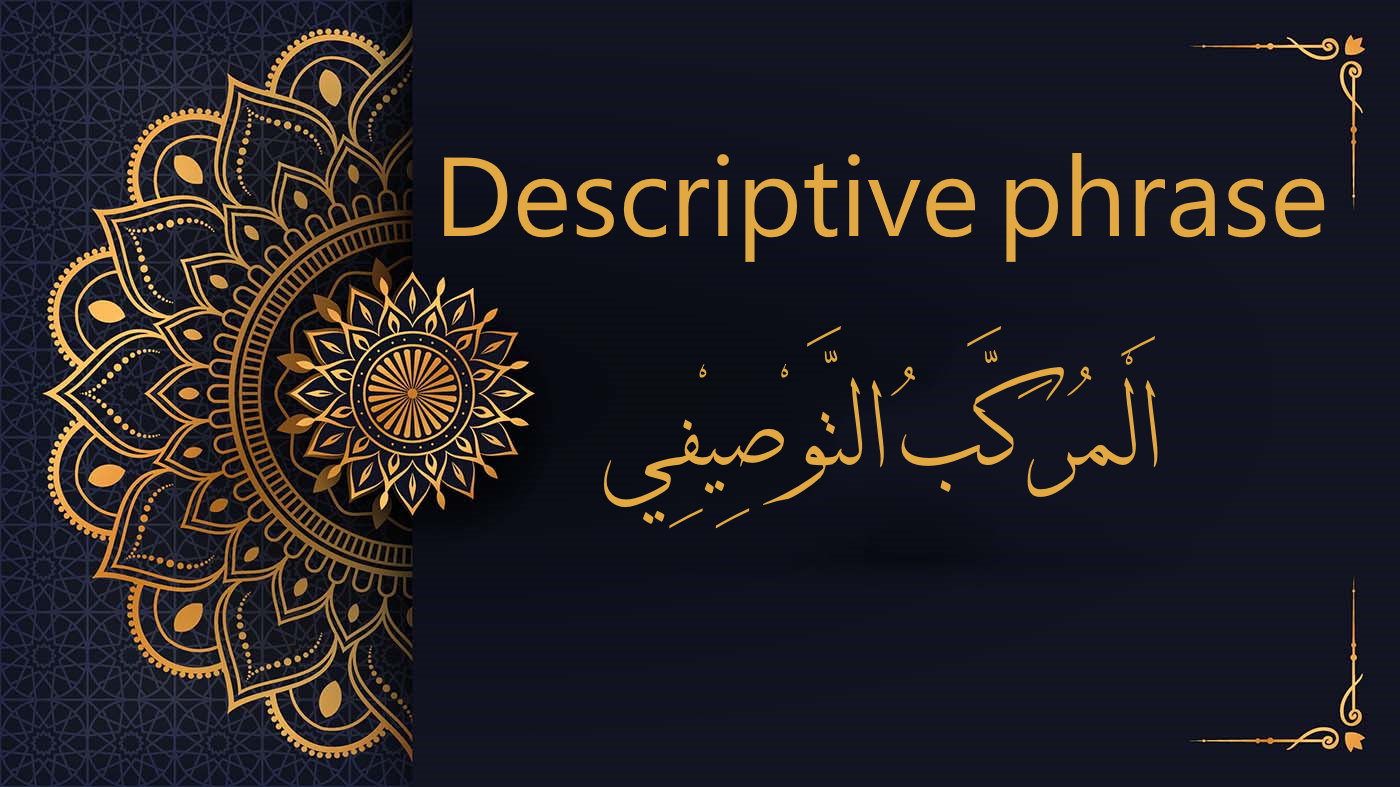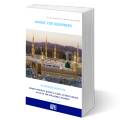
In Arabic, the descriptive phrase pairs two nouns, with the second acting as an adjective that elucidates the nature of the first. Within this structure, the primary noun, the one being described, is referred to as:
اَلْمَنْعُوتُ or اَلْمَوْصُوفُ.
Subsequently, the second noun, which functions as the descriptive adjective, is termed:
اَلنَّعْتُ or اَلصِّفَةُ.
These components work in tandem to provide richer context and detail within a sentence.
Both اَلْمَوْصُوفُ and اَلصِّفَةُ harmoniously align in terms of:
In Arabic, the definiteness or indefiniteness of a noun and its accompanying adjective are synchronized.
Specifically, if a noun is definite, its adjective will echo that definiteness. Conversely, if the noun is indefinite, its adjective will share that characteristic.
Here are a few examples of indefinite nouns:
وَلَهُمْ عَذَابٌ عَظِيمٌ
And for them is a great punishment. (2:7)
إِنَّهُ لَكُمْ عَدُوٌّ مُّبِينٌ
indeed, he is to you a clear enemy (36:60)
سَلَامٌ قَوْلًا مِّن رَّبٍّ رَّحِيمٍ
[And] “Peace,” a word from a Merciful Lord. (36:58)
وَإِنَّ رَبَّكَ لَهُوَ الْعَزِيزُ الرَّحِيمُ
And indeed, your Lord – He is the Exalted in Might, the Merciful. (26:68)
اهْدِنَا الصِّرَاطَ الْمُسْتَقِيمَ
Guide us to the straight path (1:6)
In Arabic, adjectives conform to the gender of their associated noun. Hence, a masculine noun will have a masculine adjective, and a feminine noun will be paired with a feminine adjective.
Here are some illustrative examples:
النَّجْمُ الثَّاقِبُ
It is the piercing star (86:3)
فَسَوْفَ يُحَاسَبُ حِسَابًا يَسِيرًا
He will be judged with an easy account (84:8)
In Arabic, a feminine noun is often characterized by the addition of “ة” at the end, known as Ta Marbouta. Adjectives corresponding to these nouns will also typically adopt this feature.
Here are a few examples of such feminine nouns:
فَهُوَ فِي عِيشَةٍ رَّاضِيَةٍ
He will be in a pleasant life. (101:7)
نَاصِيَةٍ كَاذِبَةٍ خَاطِئَةٍ
A lying, sinning forelock. (96:16)
In Arabic, adjectives align with the numerical form of their associated nouns. This means a singular noun will be paired with a singular adjective, a dual noun with a dual adjective, and a plural noun with a plural adjective.
Here are some illustrative examples:
بَلْ هُوَ قُرْآنٌ مَّجِيدٌ
But this is an honored Qur’an (85:21)
بَلْ هُوَ آيَاتٌ بَيِّنَاتٌ فِي صُدُورِ الَّذِينَ أُوتُوا الْعِلْمَ
Rather, the Qur’an is distinct verses [preserved] within the breasts of those who have been given knowledge. (29:49)
In Arabic, adjectives mirror the grammatical case of the nouns they modify. Hence, if a noun is in the nominative, accusative, or genitive case, its corresponding adjective will adopt the same case:
This alignment ensures consistency and clarity within the sentence structure.
فَضْلًا مِّن رَّبِّكَ ۚ ذَٰلِكَ هُوَ الْفَوْزُ الْعَظِيمُ
As bounty from your Lord. That is what is the great attainment. (44:57)
جَزَاءً مِّن رَّبِّكَ عَطَاءً حِسَابًا
[As a] reward from your Lord, [a generous] gift [made due by] account, (78:36)
لِيَوْمٍ عَظِيمٍ
For a tremendous Day – (83:5)
In Arabic, when the noun being described, اَلْمَوْصُوفُ, is a broken plural or represents a collection of non-living entities, the descriptive adjective, اَلصِّفَةُ, adopts a singular feminine form.
Here are some illustrative examples:
فِيهَا سُرُرٌ مَّرْفُوعَةٌ
Within it are couches raised high (88:13)
وَنَمَارِقُ مَصْفُوفَةٌ
And cushions lined up (88:15)
In a possessive construct, when referring to the noun being possessed (اَلْمُضَافُ), it assumes the role of the main noun or subject. Consequently, any adjective describing it must be rendered definite by prefixing it with the article اَلْ.
Illustration 1:
بَيتُ اللَّهِ الحَرامُ
The holy house of Allah
Although بَيْتٌ is generally an indefinite noun, in this context, due to its role as اَلْمُضَافُ in a possessive construct, it adopts characteristics akin to a definite noun. To ensure consistency, the adjective حَرَامٌ is made definite with the addition of the article اَلْ.
Illustration 2:
تِلْكَ آيَاتُ الْكِتَابِ الْمُبِينِ
These are the verses of the clear Book. (26:2)
المُبِين serves as the adjective for الْكِتابِ, and they harmoniously match in aspects such as number, gender, and so on.
بَيْتُ اللَّهِ الْعَظِيْمُ
The great house of Allah
بَيْتُ اللَّهِ الْعَظِيْمِ
The house of Allah, the Greatest
In the aforementioned sentences, the E’raab (إِعْراب) distinctly indicates which noun the adjective is modifying.
This lesson on Arabic nuances concludes here. Insha’Allah, our subsequent session will delve into the simple nominal sentence in Arabic.
Al-dirassa Institute invites you on a linguistic journey with our expert teachers to master the Arabic language. Should you wish to further your studies, we welcome your inquiries.
Discover the experiences of our delighted clients who have thoroughly enjoyed utilizing this standout feature.
Alhamdulillah I‘m very pleased with the arabic and Qur’an lessons I receive from teacher Umm Tasneem and I‘m also content with the al-dirassa administration team who were very quick in answering any questions I had. In a month I progressed a lot and I cannot wait to continue my studies with al-dirassa. May Allah reward everyone at al-dirassa.
Verified review - view original
My Qur’an teacher is fantastic, she teaches me in a loving and kind way where I look forward to the lessons and learn so much. My Arabic teacher is equally as nice and has a lot of patience with me, she has great expertise in the field and I’ve progressed really quickly with her. Thank you Al-dirassa!
Verified review - view original
Don’t want to go through the translation anymore?
30 free minutes with your qualified Egyptian teacher.

Al-dirassa Institute offers you a gift to help you begin your journey to being fluent in Arabic and learning the Quran.

Al-dirassa Institute offers you a gift to help you begin your journey to being fluent in Arabic and learning the Quran.